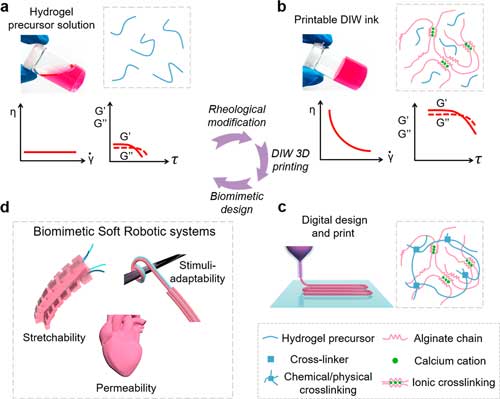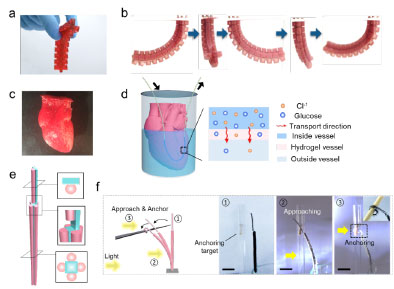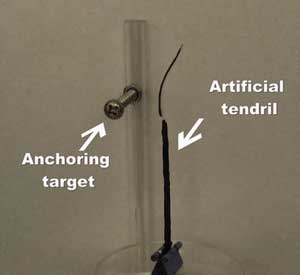| Hydrogel materials possess intrinsic softness and they also exhibit other favorable properties that make them a perfect fabrication material for biomimetic soft robots: stretchability, biocompatibility, permeability, and stimuli-adaptability. | |||||||||||||||||
| Currently, the pervasive application of hydrogels for soft robotic constructs is still hampered by two challenges. For one, conventional hydrogels usually show limited mechanical robustness. For another, the building of hydrogel-based robots typically depends on custom-designed molds and laborious post-assembly, which limits the freeform 3D structure design. | |||||||||||||||||
| In general, there still is a lack of manufacturing schemes that can enable the rapid design of biomimetic soft robots from hydrogels with desired architectural sophistication and mechanical robustness. | |||||||||||||||||
| Recently, the research group of Ghim Wei Ho, an Associate Professor at National University of Singapore, has developed a facile and versatile strategy to directly print hydrogels into biomimetic soft robots. | |||||||||||||||||
|
"Biocompatible alginate rheological modifier of hydrogel allows straightforward manufacturing into arbitrary 3D topologies using direct-ink-write (DIW) 3D printing," Ho explains. "Notably, the intrinsically hydrophilic alginate preserves the valuable properties of the host hydrogels, accompanied by enhanced mechanical toughness owing to the double polymer network."
|
Copyright © 2024 International Society of Bionic Engineering All Rights Reserved
吉ICP备11002416号-1












